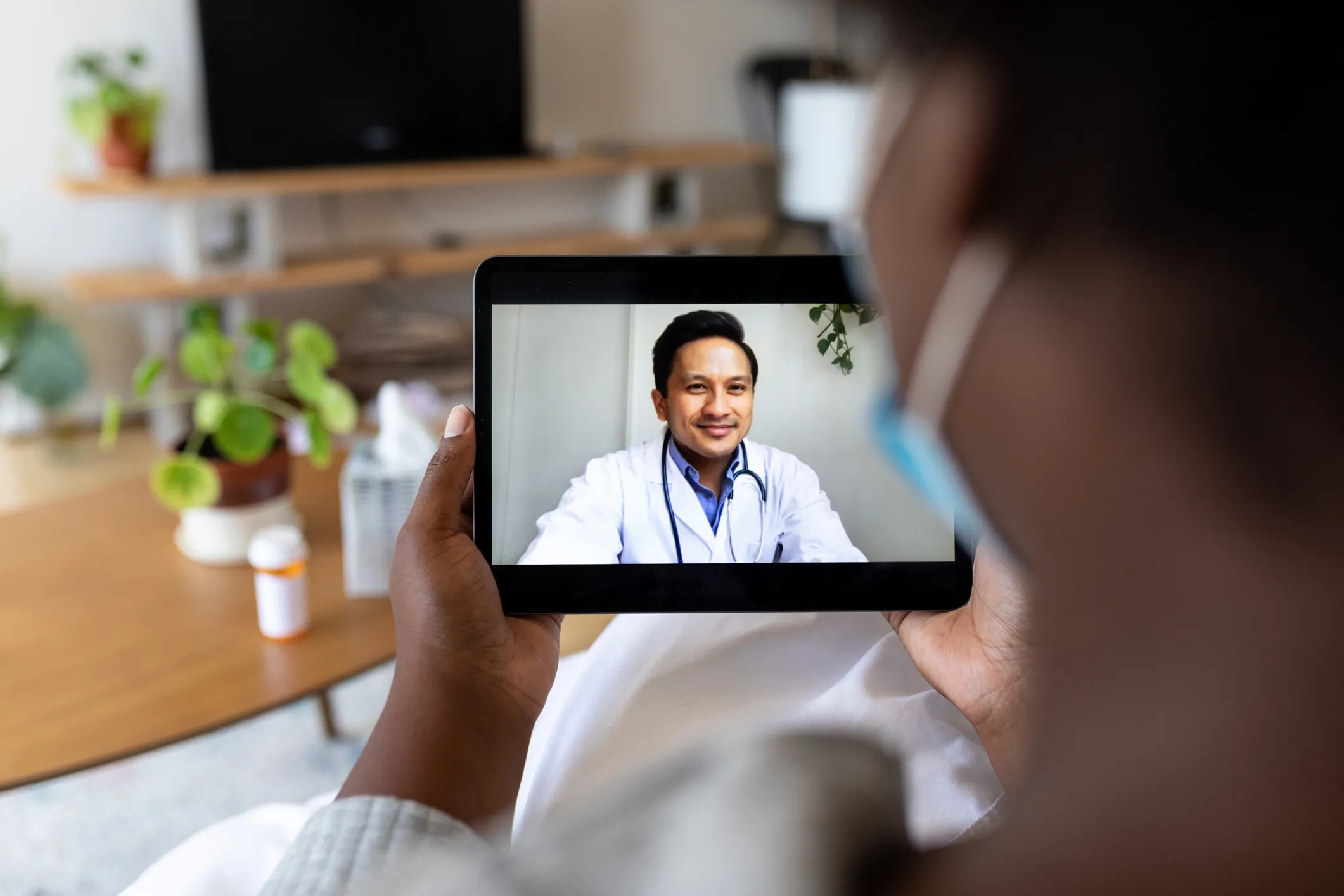 This piece is part of the series, Sustainable Development in the Indo-Pacific
This piece is part of the series, Sustainable Development in the Indo-Pacific
The telephone rings, the nurse answers and you request to see a doctor. The nurse confirms your identity and location, so that they can dispatch emergency healthcare services if need be. The doctor then appears in their familiar white coat. You and the doctor chat over the call, staring at each other on your phone screens. It is like a WhatsApp call, except that the subject of discussion is your medical condition. The call is recorded for future reference, and you pay 20 Singapore dollars as consultation fee at the end. Medicines, if prescribed, are dispatched directly to your home address.
Ever since the COVID-19 pandemic struck, the marriage of technology and health has received a new boost. The need for social distancing, the restrictions on mobility of people and access to medical institutions, and an overburdened healthcare system—all have created the necessity for telemedicine to step in and save the day. While before the pandemic, telemedicine services were voluntary, post-pandemic they have almost become mandatory in many cases, especially in the case of chronic diseases.
The Singapore government defines telemedicine as, “the assessment of health, diagnosis, treatment, intervention, or care where the service is provided exclusively over a distance through the use of info-communications technology by a medical practitioner or dentist.” In early 2020, the Ministry of Health, Singapore, launched a Voluntary Listing of Direct Telemedicine Service Providers (VLDTSP), which now includes more than 700 entities across the island city. These entities are working with the government, on a voluntary basis, to provide telemedicine services based on protocols developed by the government.
< style="color: #0069a9">Telemedicine usage shot up with the conditions imposed by the pandemic, however, its convenience and capacity to improve efficiency—for example, better usage of the same network of providers—is leading to its further expansion.
In 2018, in an attempt to develop this sector, the Singapore government launched the Licensing Experiment and Adaptation Programme (LEAP) for telemedicine providers. This programme was a regulatory sandbox with telemedicine providers, in which the government partnered early on with the industry, to understand the risks and opportunities as products and processes evolved. In the initial stages of the programme, 11 telemedicine providers worked closely with the government to co-create governance and regulatory measures for the sector.
Regulatory sandboxes, as a policy tool, have been used by the government in other fast-evolving sectors such as FinTech, the environment, amongst others. By deploying such a policy tool, the government was not only able to monitor and learn about the development in telemedicine but also develop regulatory measures and training content, which was to be later used by the larger industry. After three years of experimentation and adaptation, the government closed the regulatory sandbox in 2021 and is now moving towards more concrete regulation and governance measures for the telemedicine sector.
In 2022, under the new Health Services Act (HSA), the government will formally license these service providers. However, ever since the COVID-19 pandemic has struck, telemedicine providers have already been used extensively. For instance, the government has appointed certain telemedicine providers to be consulted when patients are recovering from home after being tested positive for COVID-19.Telemedicine providers have also borne the burden of providing care for chronic disease patients—diabetes, hypertension, anxiety—when a lot of the traditional resources were diverted towards COVID-19.
Telemedicine usage shot up with the conditions imposed by the pandemic, however, its convenience and capacity to improve efficiency—for example, better usage of the same network of providers—is leading to its further expansion. While the concept of telemedicine is already popular in the US, UK, and China, Singaporean companies are rapidly moving ahead, expanding their footprint in Asia. One such company is Doctor Anywhere (DA), which now provides services in Singapore, Thailand, Vietnam, Malaysia, and Philippines and has tech hubs in Bangalore and Ho Chi Minh. Its services include COVID management, chronic disease management, mental wellness, nutrition and fitness, birth control, etc.
Challenges faced by telemedicine providers
While telemedicine companies are expanding rapidly, providing job opportunities not only in the host country but also in other tech centres of the world, they still have many challenges to overcome. These challenges include patient hesitation and trust in online consultations, the availability of high-speed internet and devices, the development of remote management processes and spam calls, and data privacy. At the same time, medical providers must be cognizant of the patients who cannot access telemedicine services easily or those whose conditions require physical examination. For instance, patients with acute illnesses or patients who require lab tests will still need to visit the clinic physically. Similarly, a secure verification system needs to be developed to ensure that patients do not end up sharing sensitive information with unverified individuals.
< style="color: #0069a9">While telemedicine companies are expanding rapidly, providing job opportunities not only in the host country but also in other tech centres of the world, they still have many < style="color: #0069a9">challenges to overcome. These challenges include patient hesitation and trust in online consultations, the availability of high-speed internet and devices, the development of remote management processes and spam calls, and data privacy.
In Singapore, the telemedicine providers have also faced challenges of scaling-up with the surge in the demand for services during the pandemic. Such challenges have led to longer waiting periods and a reduction in the quality of care provided. Therefore, policymakers elsewhere need to take a measured approach to the development of the sector. Remembering the Singaporean context of large public sector dominance in healthcare and a strong regulatory system is also essential while assessing the potential of telemedicine. The government’s ability to steer the sector and exercise enormous control because of its ownership and regulatory power cannot be ignored.
Overall, while the future of telemedicine is bright, it is fraught with challenges. Replicating the same level of care through online consultation might be challenging in many cases. At the same time, patients might not experience the same level of satisfaction despite seeing the same doctor online. The usual market failures of the health sector also remain. An adaptive, well-intended, and measured application of telemedicine technology is essential for it to be effective. A regulatory sandbox approach, like that adopted in Singapore, might be one way to approach a complex and rapidly-evolving sector like telemedicine.
The views expressed above belong to the author(s). ORF research and analyses now available on Telegram! Click here to access our curated content — blogs, longforms and interviews.



 This piece is part of the series,
This piece is part of the series,  PREV
PREV


